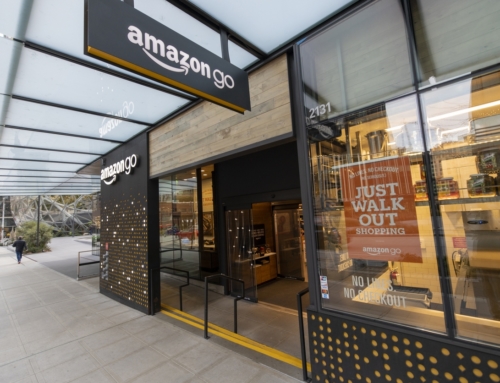At the start of COVID-19, the “new” technology everyone was talking about was Zoom. We had to work, and because we couldn’t go to the office, we turned to video calls. At the time, it seemed temporary. We thought things would be back to normal in a few weeks or, in the worst case, a few months.
Little did we know how bad it would become. Weeks turned into months; months turned into years. As the days went by, we accepted things would never go back to normal. The workplace setting made a permanent switch from on-site to hybrid and remote models, and new technology was created to support the new setting.
Today, according to an Accenture report, more companies than ever (63%) have adopted the new hybrid workplace arrangement and a majority of workers (83%) prefer it. It is more efficient, productive, and improves employees’ welfare. This widespread adoption would not have been possible if the hybrid workplace wasn’t supported by the right technology. In this article, we will discuss how technology has adapted to the hybrid workplace, supported it, and improved it.
1. Communication Technology
Companies with a hybrid workforce must use reliable communication channels because of the distributed workforce. Reliable channels ensure employees remain updated on any important developments to avoid problems. Before the pandemic, the preferred mode of communication was email and face-to-face communication. When the pandemic started, workplaces switched to Zoom video calls and instant messaging. They allowed people to communicate in real-time, improving the workflow.
As time went by, people still couldn’t meet and had to collaborate on company projects. This led to the rise in popularity of platforms such as Slack and Microsoft Teams. They allowed organizations to streamline work from different teams and individuals, host more effective video meetings and chatrooms organized by topic and keep everyone in the workforce informed. Over time, these technologies have been updated with different features to match the hybrid work model. For instance, video call software comes with video filters to help participants look better during meetings. They also feature captions and transcription to capture the text of the video call to review later. Lastly, they have better encryption to avoid security issues.
As an example, Microsoft Teams now comes with the co-organizer meeting role to give organizer capabilities to invited people. These improvements have made it easier and more convenient to join and participate in company meetings, and pass and receive information so no one in the workforce is left behind.
2. Cloud-Based Technology in a Hybrid Workplace
Cloud-based technology makes hybrid work possible by addressing some of its critical challenges such as cybersecurity, physical security, and limited access to important files. Cloud computing has been around since the 60s, but it hasn’t seen as much development since then as it has in the past couple of years. Before the pandemic, the primary use of the cloud was storage. But since a hybrid work environment became a thing, various cloud apps and tools have come up to facilitate it. To begin with, Microsoft Office 365 and Google Workspace allow companies to recreate their work environment in a virtual space. Now, one only needs an internet connection and a device to go to work. Using the same information-sharing platform and centralized communication allows workers in different locations to work together seamlessly.
Cloud computing has also led to the development of document management systems. These systems allow workers to store and share electronic files securely and quickly. They also allow restricting document access, ensuring only authorized parties have access to important files. Without document management systems and cloud computing, remote workers would have to store the files in their own personal devices, which is a security risk.
Because some employees spend more time at home than on-site, organizations should check on them every once in a while. Improvements in cloud computing to accommodate this include integration with other cloud-based technologies that facilitate health and safety protection for the employees. Such integrations include wellness verification and temperature checking devices. Workers can also log in to their accounts regardless of location and continue working. This improves security and allows managers to track individual and group progress on individual and team projects respectively.
3. Automation
Automation has been around even before the first computers were created. But as the hybrid model takes over, automation has undergone some changes and developments to match and improve the new workplace. Companies with some people working from home and others on-site have one problem: there are fewer people in the office to deal with common tasks, such as stocking the refrigerator, monitoring the toner in the printer, and restocking the paper in the copy machine. They could hire people for those specific tasks, but that beats the goal of fewer people in the workplace.
Automated these tasks through the internet of things (IoT). The IoT is a network of physical objects embedded with sensors, software, and other technologies to allow them to do certain things by themselves. For instance, organizations can automate lights in the office to turn on, brighten, dim, or turn off. If the printer is low on paper or toner, it notifies the right person. Automating these processes allows hybrid offices to run smoothly, so every worker can focus on more important tasks.
Examples
Apart from the internet of things, automation helps with technical support for the hybrid workplace. For example, since not everyone is at the office, automation helps handle customer/client inquiries and directs them to the employee who handles such issues best. For instance, the Robotic Process Automation (RPA), through text recognition, can read the message, categorize it, and allocate it to the best team member to resolve.
Microsoft Power Apps and other similar software have gained popularity with the rise of hybrid workplaces. Because at-home workers don’t have access to IT or support, they can automate key business processes and build custom apps to help them with their jobs without any coding knowledge. If the company uses mobile device management solutions, they can monitor the devices through machine learning and AI.
4. Security Technology for a Hybrid Workplace
Most organizations have always taken security seriously and had embedded it in their processes long before the pandemic came. There were security challenges from back then. But since the hybrid work model has been adopted, they have increased 6fold. Additionally, before the pandemic, 71% of organizations felt well-positioned against cyberattacks. Now, the number has plummeted to 44%.
Organizations with a hybrid workforce have had to employ more sophisticated measures to keep their data and information safe. Some of these measures include the use of remote-access virtual private networks (VPN). It helps employees who are remotely accessing the organization network using their own devices to encrypt the connection. This reduces the risk of viruses, phishing scams, and malware among other security threats. Despite their security, some experts believe they make organizations vulnerable to bad actors because they give the user uninhibited access to the organization’s network.
Another development in the hybrid workspace is mobile device management (MDM) solutions. They enable IT admins to monitor, control, secure, and enforce policies on mobile devices and any other endpoint accessing sensitive organization data. Though effective, MDM leads to privacy concerns because employee personal devices need monitoring for security reasons. The alternative is to supply employees with dedicated work devices with the software preinstalled.
Other measures include ensuring the right user is the endpoint using biometric identification through keystroke analytics and advanced biometric solutions based on facial or voice recognition.
5. Collaboration Technology
Most projects and processes in an organization require input from different people who are in sync. But with the hybrid workplace, the normal in-office collaboration methods have had to change and improve to facilitate work coordination. Collaboration technology refers to systems and tools designed to facilitate group work, whether the members are off-site or on-site. It designates roles and responsibilities and allows the manager to monitor and track progress.
As mentioned under “Cloud Technology”, software such as Slack and Microsoft Teams allow employees to recreate their work environment and work together as if they are in the office. They also allow employees to share files easily and track the progress of different team members and the team. On top of the communication technology we discussed, conferencing technologies have been created and improved to accommodate the hybrid workplace. They include shared applications and shared digital whiteboards among others. They allow two or more individuals to communicate in real-time and make changes and work on a unified screen.
To make it easy to manage end-to-end workflow, coordination technology such as E-Calendars, time trackers, project management systems, and client portals among others can help managers. They help integrate individual and teamwork so individuals and groups can work together and coordinate their activities and tasks.
Before the shift to the hybrid work model, it was normal for organizations to use asynchronous collaborative software. This software is not designed for immediate replies or collaboration on instantaneous tasks and activities. With the hybrid work model, synchronous software is used more than asynchronous to maintain the in-office efficiency level due to a dispersed workforce.
6. Office Management Technology
In some hybrid workplace setups, workers can come to the office or work from home as they please. Although this lets organizations save money, it gives them the challenge of managing the space more proactively. As the pandemic started, the way most organizations dealt with this was using a first-come-first-served policy, also known as hot desking. This posed obvious challenges to the organization and employees, adopting Hoteling software solves this.
Hoteling software is a technology that allows employees to use a reservation system to find and claim workspace or resources for a specific period. Just like regular hotel booking, they arrive at the office space or resource at the specified time and check out when done. Hoteling lets organizations really cut down on office space and increase savings. It also enhances employee collaboration and productivity by coordinating schedules across teams. Reserve resources in advance to improve this visitor management.
If the area has social distancing requirements, it allows the organization to remain within the limits because employees can check the density before going to the office. The organization can also set limits on how many people work on-site at any given time by requiring employees to request a building pass. Using tools such as occupancy sensors and space mapping, the organization can collect workplace usage data. Then, use it to improve the employee experience and space management.
7. Employee Experience Technology
Employee experience is everything an employee encounters and observes from the moment they come across a job posting, to when they leave the organization. These experiences impact how they work. The better the experience, the higher their productivity. The more negative it is, the lower their productivity. The move to hybrid work means workers will miss out on the cultural experiences and relationship building that come with being on-site. The concern that this will lower the employee experience is valid. But thanks to employee experience management software, they can still recreate these moments even if they aren’t face-to-face.
An employee experience management platform is software that gives organizations control over the look, feel, and interactions their employees will have while interacting with its systems. These platforms listen to employees. They gather insights through sentiment analysis, surveys, questionnaires, and text analytics among others. They can also integrate with existing tools to provide recommendations on how to connect and engage employees.
This data gives the organization insight into long-term career paths and professional development opportunities. It can be used to provide employees with an immersive, personalized experience and make new employees feel like part of the team no matter where they are working from. Making use of employee experience management platforms increases employee retention by keeping them interested and generally satisfied working at the organization. Think of it as the same way Spotify and Amazon collect data from their customers to improve their experience. On-site and off-site employees in all locations connect to improve collaboration and foster a common culture.
8. Hiring and Recruitment Technology for a Hybrid Workplace

Before adopting the hybrid work model, the typical hiring process involved creating a job advertisement and posting it on various channels and platforms. When the applications are received, they were either first passed through an applicant tracking system or read directly by the hiring manager. The right candidates were then contacted and asked to physically come to the interview.
A hybrid workforce has some aspects that make it impossible to follow the same process. For instance, the organization is not targeting people within a certain city, state, or country. They have a global talent pool to draw from so they need a good global acquisition strategy, powered by the right technology. When targeting a global workforce, chances are, an organization receives thousands of applications. These are too many to sort manually, so they make use of an applicant tracking system (ATS).
Because the hiring team is also hybrid, they will need more features than those of the normal ATS used for an on-site workforce. It should let the recruiters, managers, interviewers, and approvers access only the necessary information and files remotely and securely. They can achieve this through the collaboration and security technology we discussed. Also, any actions taken by any team member should be easy to track.
Recruiting Software
The huge number of applications can also be handled by a full-fledged recruiting software that allows the recruiting team to streamline or automate parts of their recruitment process including functions such as sourcing, selecting, screening, and interviewing candidates.
Because some workers are 100% remote, the typical onboarding process would be impractical were it not for technological improvements. Onboarding applications allow the hiring manager to share important organization information and policies with new hires. They also allow the organization to introduce new hires to the team and through employee experience technology, make them feel at home as soon as they are hired.
Use Technology for a Hybrid Workplace
Based on how much technology has adapted to the hybrid workplace and how beneficial it is, organizations no longer have a reason to stick to the traditional strictly-in-office model. Technology has made it easy to switch to and maintain a hybrid workplace model without a drop in productivity. From the above, it is a bit obvious this change to hybrid work benefits people with a career in technology. So, now is the best time to start a tech career.
If you’re interested, Woz Partners can help you get started. We offer different training and apprenticeship options to help you launch your career in technology. Our accredited and certified training providers will help you develop your skills. Contact us today for consultations.





